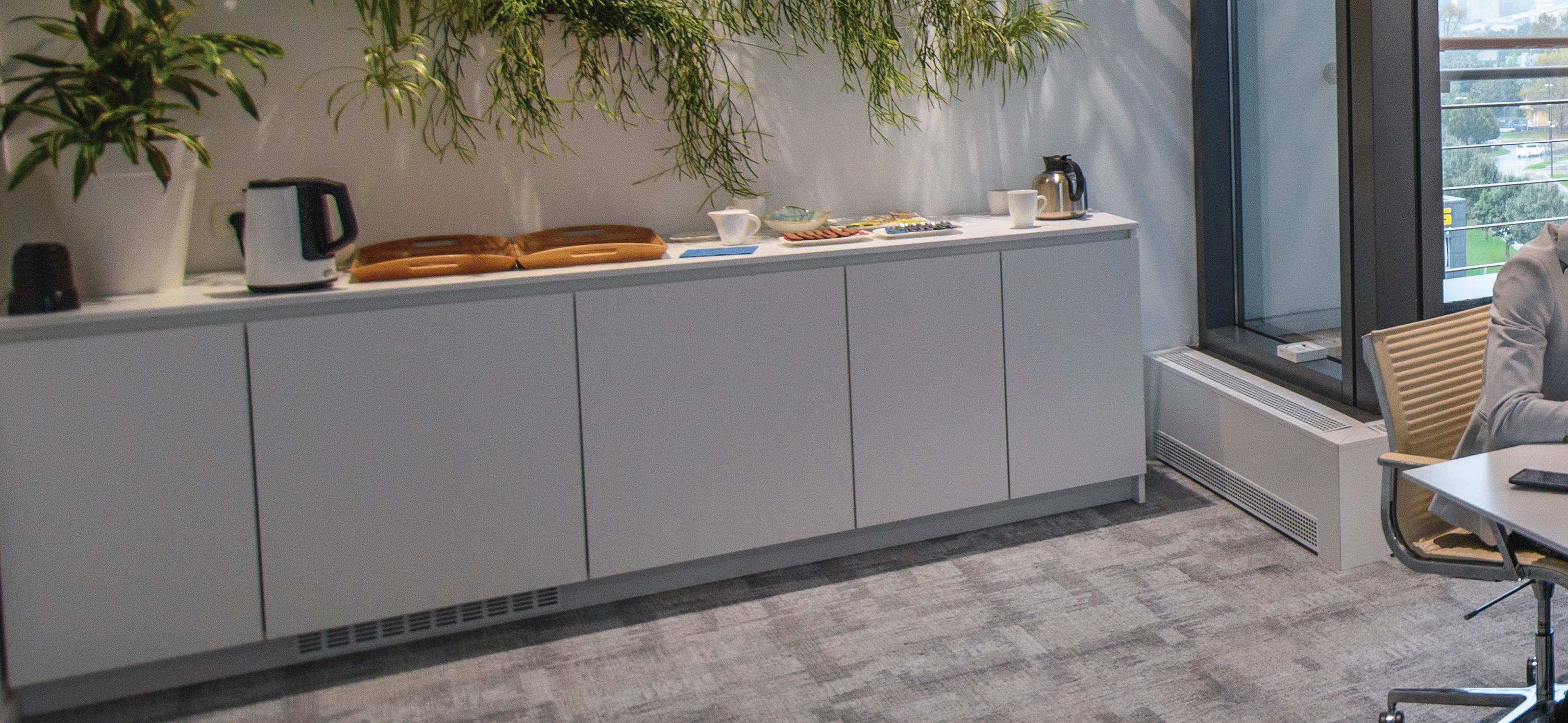
5 minute read
Setting the Tone
Brittanie Davis Morge is the proud community manager of River Creek Owners Association located in Leesburg, VA. She has been in the industry for 15 years achieving the highest level of certification, her PCAM.

Advertisement
Your board meetings are one of the most important ways to communicate with your membership. They are the trifecta of all the vital players: your membership, board members and most likely management. With all these individuals in one place, it is surprising that the majority of board meetings have low attendance and owners frequently leave feeling put off. Unfortunately, board meetings can often be a place of bickering, complaining and discontentment. Coincidently, there are even websites dedicated to Board Meetings gone wrong.
YOUR ASSOCIATION BANKING PARTNER
Wintrust Community Advantage offers a complete suite of financial products and services to townhome, homeowner, and condo associations. We tailor these products to the unique needs of these community associations.
RECENTLY FINANCED PROJECT $200,000
Ground stabilization, repaving, related expenses, and professional fees Radford, VA
communityadvantage.com
KIM MYLES, CMCA
VICE PRESIDENT Wintrust Community Advantage - MD/DC/VA kmyles@communityadvantage.com C: 734-276-3330 | D: 240-772-1212 It’s been said time after time, tone is everything. A board meeting is the perfect place to be present of the tone and show the true meaning of the professionalism, but how can that be achieved when meetings have such a bad rap?
But fortunately, there are some things that can help to leave your membership feeling better about their Association’s business. Here are a few tips that I have learned over the last decade and a half that can help to change the tone of your meeting.
Being Prepared
The key to any good meeting is having an agenda in advance that the Board is familiar with and has agreed upon. This helps direct the meeting in a synchronized manner, allows the membership to follow along and proves that there is a reason to conduct business. And most importantly it sets a tone of professionalism.
Setting Expectations
Your board President should recognize immediately whether or not there are new faces in the assembly. If this is the case, it
Setting the Tone

is an excellent opportunity to lay out some ground rules at the commencement of the meeting. These should be announced in a friendly manner that encourages your membership to be engaged, act courteous but also participate in the meeting. Some examples are:
• Mentioning that the meeting is being recorded. If owners are aware of this, and legally they should be, it tends to encourage them to be deliberate with their words. • Explaining when owners’ forum is and what is its purpose. Along with encouraging owners to sign up to speak, stressing this can alleviate a lot to shout outs or interjections while the Board is conducting their business. • Explaining how old and new business will be reviewed by the board and that owners may not comment at that time. As well as the fact that this is the only time the board meets to make association decisions. This will show that this time is important and they only time that decisions will be made. • Explain when meeting minutes will be available. So many people think that right after the meeting they can get a copy to share with their neighbors. This is not the case and the expectation should be set for newcomers. • Explain what executive session is and for what purpose the board will be entering it that evening. As well as, mentioning that no action will be taken in executive session. Owners love transparency.
We hear that word a million times throughout our industry. Acknowledge it and own it. It is up to the owner to stay to hear the motions made after Executive Session or read the results in the meeting minutes. This gives them the choice.
Be Present
During my board meetings I choose to sit with the board, but I angle myself or my table to face towards them. This way they are aware that I am actively listening, taking notes and I am able to get their attention should they need guidance, redirection or I need clarification. I tend to comment after motions are made to get clarification on how they would like the motion recorded if there was a lot of discussion or to thank them for taking action. This shows the membership that management and the board are on the same team, trying to better their community. It also expresses that once the meeting has concluded my work is not done. I will take the actions given and implement them.
You should also strive to practice active listening skills during owner’s forum. Ask the owner for clarification about their name and address, if they have handouts or visuals take a picture of them, ask them to email you any additional information after the meeting so their subject is fresh on your mind. This sets a professional and amiable tone that will leave your owners feeling heard.
Be Gracious
Kindness goes along way. I learned from a manager about ten years ago, that is it important to thank your board in the membership’s presence. They are after all volunteers and the are giving up at least a few hours of their personal time to help you achieve your communities’ goals. I frequently thank the board after they make a motion, after they have given me an action item or anytime, they complement management in anyway. It shows that I have respect for the process and in turn your membership inevitably will.
Your board meetings are not a time to dismiss ideas, make owners feel unwanted or to hash out disagreements. It is a time to be grateful that others show interest in your community as well and this should be acknowledged at every meeting.
Setting the right tone throughout the meeting can be the difference between members leaving frustrated or feeling informed.








